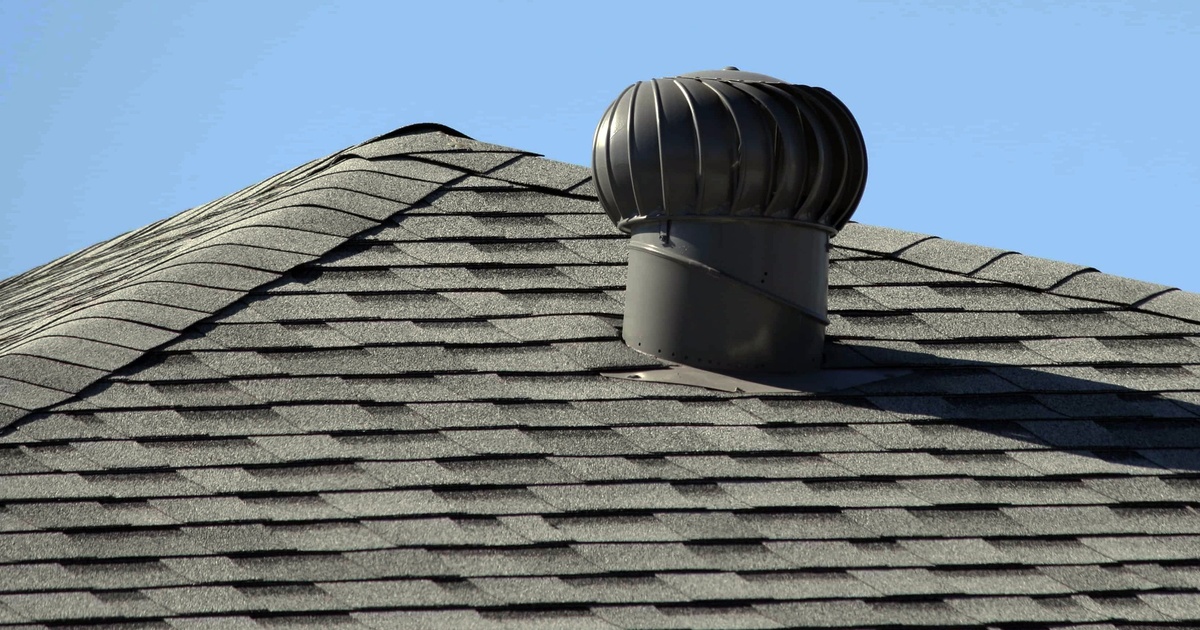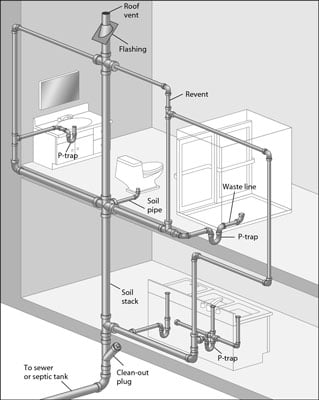Everyone may have their own unique piece of advice with regards to Essential Plumbing Vent Pipes: Understanding Their Role.

Proper ventilation in pipes systems is usually neglected, yet it is vital for maintaining the functionality and security of your home's pipes. Air flow assists regulate atmospheric pressure, avoid the accumulation of damaging gases, and make certain the efficient elimination of waste. In this overview, we will discover the significance of proper pipes ventilation, how it works, and the benefits it brings to your pipes system.
Just How Air Flow Functions in Pipes Equipments
Atmospheric Pressure Policy
Correct ventilation keeps balanced atmospheric pressure within the pipes system. When water streams via pipes, it displaces air. Without appropriate ventilation, this displacement can develop negative pressure, bring about slow down drains or siphoning of water from catches, which can create unpleasant smells to leak into the home.
Protecting Against Sewer Gas Build-up
Among one of the most important features of pipes vents is to stop sewage system gases, such as methane and hydrogen sulfide, from accumulating within the home. These gases can pose serious health risks and are very combustible. Vent pipelines enable these gases to leave safely outdoors.
Aiding in Waste Elimination
Ventilation assists in the effective elimination of wastewater by stopping airlocks in the drain system. When air can stream freely with the vents, it permits water and waste to stream smoothly via the pipelines, lowering the threat of clogs and backups.
Advantages of Proper Ventilation
Improved System Efficiency
Correctly ventilated plumbing systems operate much more effectively, with fewer obstructions, faster draining, and much less pressure on the pipes. This effectiveness expands the lifespan of the plumbing system.
Improved Air High Quality
By preventing sewer gases from entering your home, appropriate ventilation adds to far better interior air top quality, making your living setting healthier and extra comfortable.
Preventing Water Damages
Adequate air flow helps protect against water from being siphoned out of traps, which can bring about drain gases getting in the home and causing water damages over time.
Steps to Ensure Appropriate Air Flow
Consulting Pipes Codes
Always consult regional pipes codes when making or modifying your plumbing system. These codes provide the essential standards for appropriate airing vent and guarantee your system satisfies safety criteria.
Regular Inspection and Maintenance
Routine examinations can help determine prospective ventilation issues before they become major troubles. Upkeep jobs, such as cleaning up vent pipes and looking for obstructions, are necessary for maintaining the system in good working order.
Expert Installation
For brand-new setups or major modifications, it's important to employ a professional plumber. They have the knowledge to ensure the air flow system is correctly made and installed according to code.
Recognizing Ventilation in Pipes
Air flow in plumbing describes the network of pipelines that enable air to move through the drain system. These vents offer numerous objectives, consisting of controling air pressure within the pipes, avoiding drain gases from getting in the home, and helping in the smooth flow of wastewater.
Sorts Of Plumbing Vents
Key Stack Vent
The primary pile vent, additionally known as the vent pile, is the primary vent in a pipes system. It extends from the primary drainpipe align through the roofing, permitting gases to leave and fresh air to go into the system.
Branch Vent
Branch vents attach to the major stack vent and serve individual fixtures, such as sinks, bathrooms, and showers. These vents make sure that each component has ample air flow to operate correctly.
Air Admittance Valve (AAV).
An Air Admittance Shutoff (AAV) is a one-way shutoff that permits air to go into the plumbing system without the requirement for a conventional air vent pipe extending with the roofing. AAVs are commonly made use of in restorations or areas where mounting a common air vent is unwise.
Indications of Poor Ventilation in Plumbing.
Slow Draining Fixtures.
If your sinks, bathtubs, or commodes are draining gradually, maybe a sign of bad air flow. Poor air flow can produce a vacuum cleaner result, making it difficult for water to drain appropriately.
Gurgling Appears.
Gurgling audios originating from drains pipes are often a result of air being sucked through water traps due to negative stress in the pipes. This is a clear indication of inadequate air flow.
Unpleasant Odors.
Sewage system smells inside your home are a red flag that your pipes system is not appropriately aerated. This can suggest that drain gases are not being adequately vented outside, causing potentially unsafe conditions.
Typical Air Flow Blunders.
Inadequate Vent Sizing.
Utilizing undersized vent pipelines can bring about inadequate air flow and pressure discrepancies in the system. It's vital to make use of vents that fulfill the specific needs of your pipes system.
Improper Vent Positioning.
Placing vents also far from the components they offer can decrease their effectiveness. Proper positioning guarantees that air can move easily and effectively through the system.
Disregarding Code Demands.
Building codes provide specific standards for plumbing ventilation. Disregarding these codes can cause a system that falls short to work properly and may result in costly repairs or carcinogen.
Verdict.
Proper air flow is an essential part of any plumbing system, ensuring that it functions efficiently and securely. By understanding the relevance of air flow, recognizing the signs of poor ventilation, and taking actions to keep your system, you can prevent costly issues and secure your home's air top quality.
4 Things You Should Know About Your Plumbing Vents
What Plumbing Vents Are
Also called a vent stack, a plumbing vent is a vertical pipe attached to your drain line that runs through your roof. The plumbing vent pipe, or plumbing air vent, removes gas and odors from your plumbing system and allows fresh air to enter the pipes, helping the water to flow out of the drain pipes.
What Plumbing Vents Do
Plumbing vents have two basic functions. One of which is to allow unpleasant smelling wastewater and sewer gasses to escape your plumbing system instead of entering your home. Plumbing vent pipes are typically located on roofs, away from windows, to ensure the fumes exit the home completely.
The other function of the plumbing vent is to move fresh air into your plumbing system. This helps move water through every plumbing fixture in your house, like toilets and sink drains. Think of the way in which you need to let a little air into the bottle as you pour soda in order to make the drink flow smoothly.
Different Types of Plumbing Vents
True vent: This is the most common vent option. In simplest terms, a true vent is a vertical pipe attached to your drain line that exits through the roof. They often function as the main vent that other fixtures can connect to. Re-vent pipe or auxiliary vent: Attached to the drain line near specific plumbing fixtures, re-vent pipes run up and over to connect to the main vent. Common vent: Two plumbing fixtures installed on opposite sides of a wall are typically tied into the vent stack using something known as a sanitary cross. Wet vent: This venting option operates as a drain pipe and a vent at the same time. Wet vent drainage systems drain water from one fixture while venting the air from another. Although they’ve been used for over 100 years, wet vent systems have only recently been added to the plumbing code in many areas. If you’re planning on installing one in a bathroom remodel, make sure you check your local code prior to construction. Loop vent: For free-standing fixtures like kitchen island sinks, loop vents are ideal. These vent pipes run under the floor, rise from the P-trap, and create a loop inside the cabinet sink. Air admittance valve: An AAV is a one-way mechanical valve typically installed at the site of the plumbing fixture. AAVs allow venting to occur without having to tie into a larger venting system. They’re ideal for venting fixtures where you aren’t able to easily connect to an existing vent system. Common Plumbing Vent Issues
Although vent pipes typically don’t have water flowing through them, they’re still subject to many typical plumbing issues. For example, clogs are one of the most common problems associated with sewer vent pipes. If your vent pipe gets clogged, all of your plumbing fixtures tied into the vent stack will be affected.
A sink with a slow drain that bubbles and gurgles or a strong sewage smell around your toilet are both indicators that your toilet vent pipe is clogged. Because most vent pipes exit through the roof, old leaves, twigs or even a bird’s nest could be clogging the pipe.
Clogs in your vent pipe system cause a buildup of negative pressure, meaning that water won’t be able to flow out of your home very well. It’s similar to putting your finger over the opening of a straw to trap water inside. When you remove your finger, the water is able to flow out of the straw.
If you suspect you have any blockage in your vent, make sure you have a professional come examine the situation. Left unchecked, a blocked air vent can lead to other costly repairs, like leaks and sediment buildup.
Under Pressure
Pipe vents are essential aspects of a home’s plumbing system. Owning a home means learning about all sorts of things you never put much thought into before. But by understanding as much as you can about the important systems of your home, you can keep those budgets intact and those anxiety levels low.
https://www.homeserve.com/en-us/blog/home-improvement/plumbing-vents/

We are very fascinated by Essential Plumbing Vent Pipes: Understanding Their Role and I'm hoping you enjoyed reading the new post. Sharing is good. Who knows, you will be helping someone out. I value your readership.
See Availability